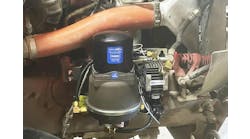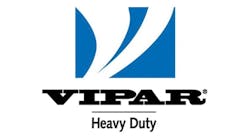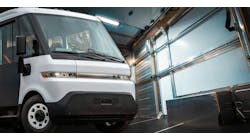Solving customer problems has kept this truck equipment dealership busy for 55 years
Now in the hands of the third generation, St. Paul-based Truck Utilities Inc hasn’t strayed from its founder’s farming roots: Necessity is indeed the mother of invention—and exploring new ideas is a good way to keep a long-established family business on the leading edge of this dynamic industry.
“You make your own change in this industry. You stay connected to customers and what their needs are, and you try to come up with a solution that may make a nice niche out of solving a particular problem,” explains Truck Utilities President Craig Capeder. “Hopefully you’ll have manufacturers that will listen, which we do. If it’s a good case, as far as a need is concerned, we’re looking for them to get on board and be able to bring something to market for us to satisfy that need.”
Case in point: On the day Trailer/Body Builders visited the company’s headquarters and original location, the leadership team from a startup company was pitching Capeder a new product that could prove “exciting” for the work truck industry—if the drawing-board concept proves itself in real-world applications.
The entrepreneurs were looking for a distributor/partner, of course, but they also repeatedly sought advice from industry veteran Capeder and Rob Streeter, utility sales manager at Truck Utilities. (Regrettably, a non-disclosure agreement precludes reporting any details of the discussion—for now.)
Asked afterward if he could’ve imagined, early in his career in the business, that he’d host such a meeting, Capeder said “frankly, no.”
On the other hand, innovation has been the company’s calling card from the beginning. The Leo Snow Plow, on iconic piece of equipment in upper-Midwest ice and snow removal circles, was designed and originally manufactured by Leo Capeder, Craig’s father who founded Truck Utilities with his father and brother in 1963. All three had worked extensively on farms, and were “metal benders” who did not hesitate to conceive and fabricate their own solutions to any problem at hand, Capeder noted.
The Leo, for example, is notable for a design that features a moldboard rolled to the radius of a perfect circle, and the plow was the first to employ compression springs instead of an expansion-spring pullback.
“They started building snow plows in 1963 as one of the functions of the business, so it definitely has a legacy with our company,” Capeder say. “We’ve been involved with plow equipment through the generations, and we’ve never left it. But we have a company that manufactures the Leo for us now.”
While the snow and ice removal business is no longer a large part of the company’s business, Truck Utilities kicks off the season each year with a display at the State Fair promoting its products targeting medium-duty equipment for contractors.
“Twenty years ago you might have had five different distributors in the metro area who carried snow plows; now you’ve got 15 or 16,” Capeder says. “So from our end it’s gotten to be more of a commodity.”
The company selects its plow product lines based on ease of installation and maintenance, he adds. Inventory levels are typically based on the previous season’s results, and the number has been “fairly steady” in the very competitive market.
“Everybody builds a pretty doggone good plow. The manufacturers that are out there today, for the markets that they go after, build a fine product,” Capeder says. “We look at the segment as a reasonable generator of business and margin for us. It also completes our offering and can be joined to other products, so a customer can find it all at our location instead of having to jump back and forth to get what he needs.”
For another value-add to its snow and ice removal business, Truck Utilities added a night shift to support after-hours repair needs.
Among recent innovations in the segment, Capeder points to the adoption of “improved” 12-volt powered spreader systems, which minimize costs related to hydraulics and gas driven systems.
The company, with additional locations in Fargo ND, and Kansas City KS, now features a couple of business units: the truck equipment group and a utility division that sells and services specialty equipment such as cranes and aerial devices, along with a 120-unit rental fleet. Paul Capeder, Craig’s brother, runs the rental business. Cousin Jay Langer also is a co-owner. Truck Utilities employs about 70 people. Key customers include the State of Minnesota and various large fleets such as public utilities and large construction contractors.
Homegrown designs
All three third-generation partners grew up around the shop and are comfortable “metal benders” like their fathers. On a tour of the production floor, Capeder cites example after example of solutions conceived and executed in the show that have become successful products.
But the first innovation Capeder points to is an overhead three-point chain hoist the founding farmers designed—and various iterations are installed around the facility.
Depending on the application, the shop routinely adapts truck bodies: outfitting with drawers or shelving systems, cutting windows, adding insulation. “There’s a number of items that end up doing what the body manufacturer just doesn’t have the ability to do,” Capeder said. “Some manufacturers will look at taking on custom requests or design changes, but some won’t. They’re very regimented in their production techniques and it just doesn’t fit. I understand that, and it gives us an opportunity to finish a product the way the end-user wants it.”
The company also does some body refurbishing work, business recently driven by the industry’s long lead times for both chassis and bodies.
“Customers don’t like these long times—we don’t like them. We’re trying to get product out of manufacturers when we need it, too,” he says. “It’s our biggest problem right now.”
Speaking of supply issues, Capeder also reports that steel and aluminum materials pricing have increased, but because Truck Utilities uses “job-shop” amounts, the increases haven’t had a significant impact on his own pricing.
Still, the company does utilize those manufacturers that take on custom projects. Truck Utilities designed a body that Knapheide builds, for instance.
“Knapheide is one of those that does have enough flexibility to meet some of our needs in specialty situations—but, again, they’re not going to do it all,” he says. “This is just a small example, but Knapheide does some pretty complex things that other companies just won’t.”
Capeder points to the side access panels on a service truck for a field mechanic. The strengthened unit is designed to support vehicle maintenance and repairs at the jobsite. The truck features an all-in-one Goodall system that functions as an air compressor, generator and welder that also provides jumpstart capability. Another area of the truck houses the welding control panel and reels, and there are numerous storage areas.
And while customers are glad to learn of the innovations being developed for others, final builds are always unique to specific needs.
“It’s much a matter of personal preferences,” Capeder says. “We’ll beat a customer’s location with the CAD designer, some examples of other bodies we’ve done and some set information as far as storage and the like, but they’ll start drawing it exactly as they need it.”
‘European mentality’
Outside in the parking lot, Capeder shows off some of the aerials and cranes in the rental fleet. He proudly explains the advantages of an Italian-made Socage aerial lift, a 94-foot lift light enough to be installed on a non-CDL truck, “which is quite amazing,” he adds.
“The European market, their mentality with respect to truck-mounted equipment is you design the equipment with light, structurally strong materials to get it onto the smallest chassis you can,” he says. “The truck is there to get the piece of equipment to the destination. It’s not to have warehouse beside it on the truck. There’s nothing in the market with that kind of height, here in the States, that wouldn’t need a tandem truck.”
An extendable hydraulic ramp that’s used by municipal sign crews, replacing a ladder, is another “farmer invention,” a company-designed and fabricated piece of equipment that’s become a regular item on build orders.
“They’ve now got a surface that’s stable,” he says. “They can pull up to the curb and the platform extends 12 feet from the edge of the truck and raise it to the height they need to work.”
A 60-foot downdraft bake-on paint booth, utilizing PPG products, enables Truck Utilities to offer “any color” a customer wants, important because of the wide range of colors and paint schemes available on pickup trucks today.
The next generation?
In discussing broader issues in the industry, Capeder explains that, like the rest of the industry, Truck Utilities struggles to find and retain skilled workers. He suggests that unlike his grandfather, his father, and himself, young people today just aren’t as exposed to machinery as people used to be, and much of the hardware people are accustomed to is designed to be replaced rather than repaired.
The children of Truck Utilities’ ownership are no exception.
“Unfortunately,” the fourth generation hasn’t expressed interest in the family business, Capeder concedes. “They all think we’re nuts. It’s a different environment, and they’ve all chosen different paths. The last thing you want to do is force it on somebody.”
But he’s a bit too busy these days to worry about that just yet.









